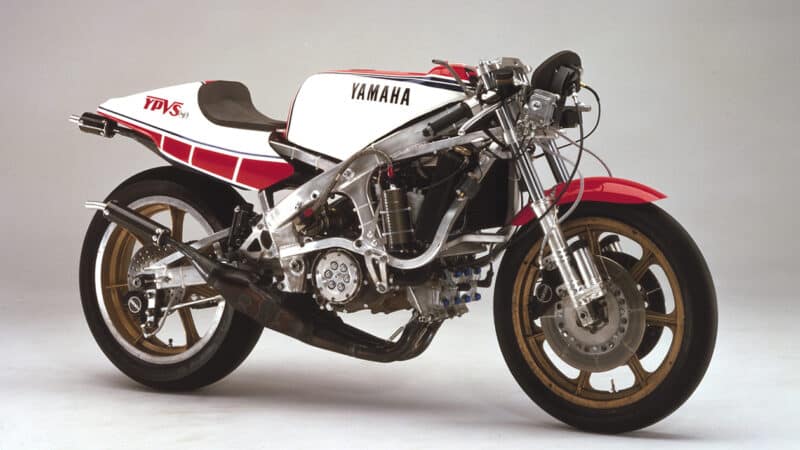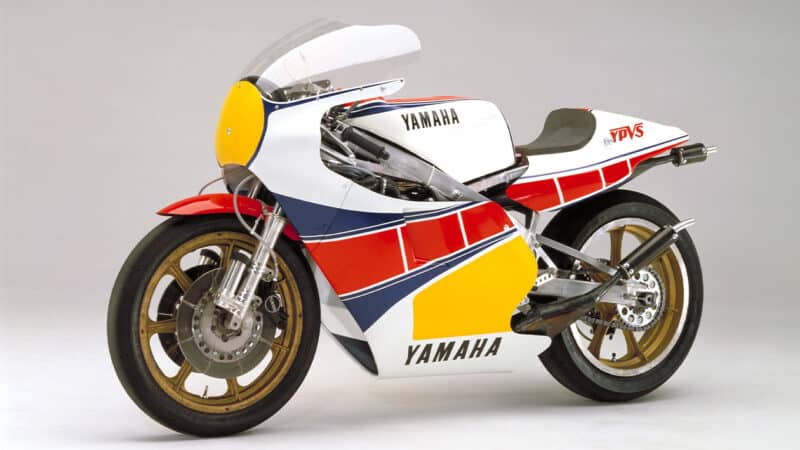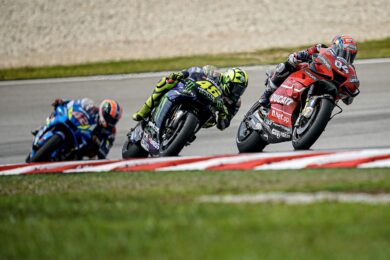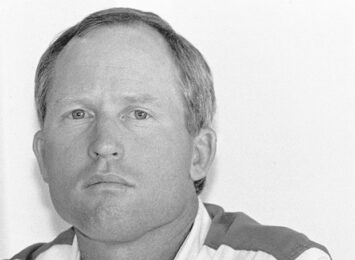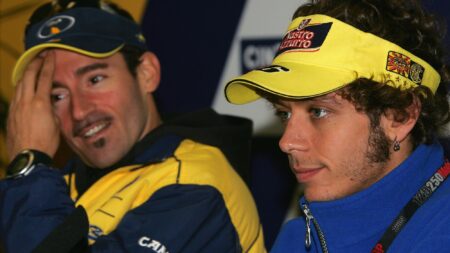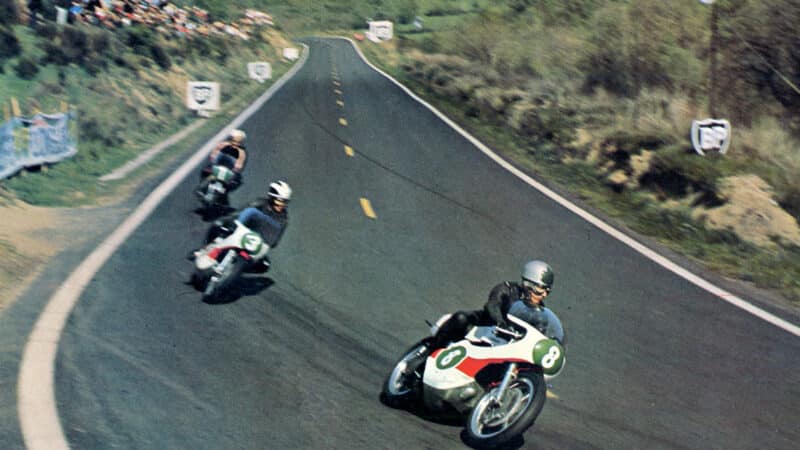Roberts liked the 0W61 V4’s power delivery but the bike was a nightmare to ride anyway, because the crankshafts were too light, so whenever the rear tyre broke traction the engine revs took off, spinning the tyre.
Crankshaft weight has a huge effect on race-bike dynamics: too light and the rear tyre will spin up too easily, too heavy and the bike won’t turn well.
The 0W61’s traction problem was exacerbated by a radical and too-clever-by-half rear suspension system.
Its rear shock was mounted horizontally across the machine, to make the best use of available space and allow the best routing for the exhausts from the rear cylinders of the vee. This was a nice idea, but too many linkages were required between frame and swingarm, drastically reducing the shock’s effectiveness.
And then there was the frame itself… a combination of square-section aluminium tubing (which had been all the rage for a few years) and larger sections that offered little longitudinal rigidity, which would’ve contributed to the bike’s habit of getting horribly out of shape while accelerating away from corners.
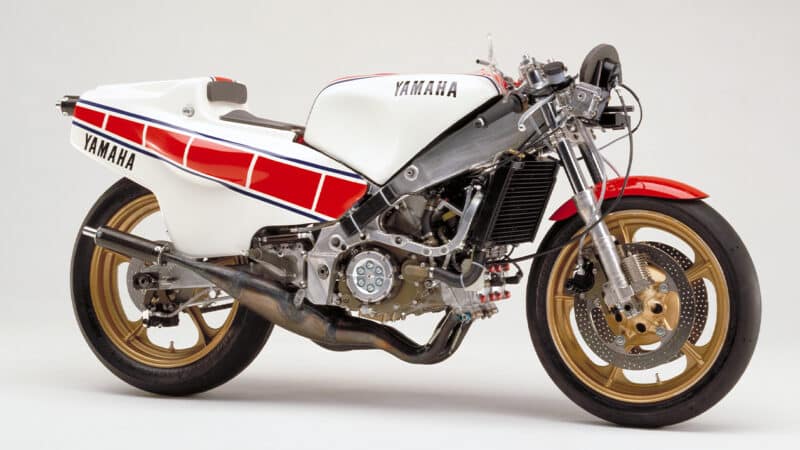
The 1983 0W70 V4 was a huge improvement – with this beefier chassis Roberts came within two points of beating Honda’s Spencer to the MotoGP title
Yamaha
Remember that the early 1980s was a period of great experimentation, with chassis engineers still searching for answers to problems that were getting bigger as engines became more powerful and tyres offered more grip.
Roberts only scored a single victory on the 0W61 – the Spanish Grand Prix at Jarama – which he considered one of his greatest successes, because the bike was so difficult to ride. But like he used to say, “What doesn’t kill you, makes you stronger”.
Yamaha engineers learned plenty from the 0W61 to become much stronger. They went back to the drawing board and reemerged from their design shop in early 1983 with the 0W70 V4. This machine was a big improvement and played a starring role in Roberts’s nail-biting head-to-head battle for the ’83 MotoGP crown with Honda’s Freddie Spencer.
Roberts vs Spencer is still arguably the greatest MotoGP duel of all time
Its frame was much stronger, with aluminium spars running from the headstock all the way to the swingarm pivot. Yamaha engineers didn’t know it at the time, but they were pioneering a concept that still reigns supreme in MotoGP: the twin-spar aluminium frame.
“When they started stiffening everything up, I could go faster and smoother for longer,” says Roberts.
In fact, although Yamaha pioneered the twin-spar frame in the premier class, its engineers had nicked the concept from Spanish engineering genius Antonio Cobas, who built a twin-spar chassis for his 1982 Kobas, ridden by future 250cc world champ Sito Pons. Cobas’s creation was essentially an adapted monocoque, because a full monocoque would make the bike pretty much impossible to work on.
After the handling nightmares of 1982, the 0W70’s rear suspension was of conventional design and had another upgrade, from a Yamaha shock to an Öhlins unit, a first in MotoGP. The Swedish suspension company had worked miracles for Yamaha’s factory motocross bikes, so it made sense to bring their expertise into road-racing.
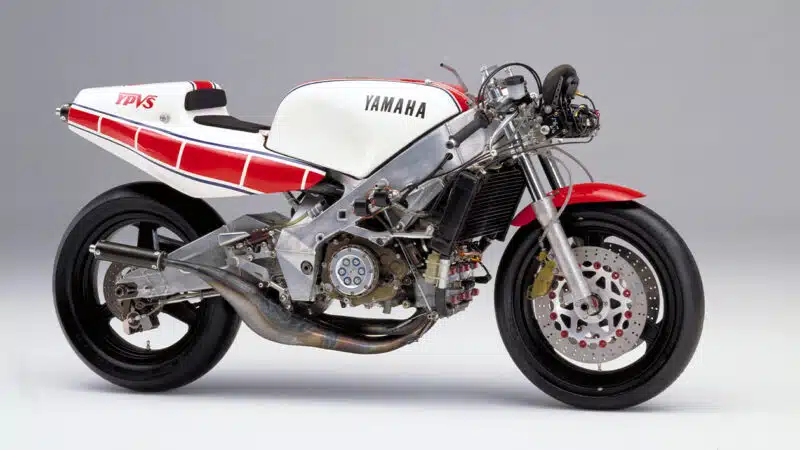
Hallelujah! Yamaha’s and MotoGP’s first V4 world champion, the 1984 0W76, with reed-valve induction and MotoGP’s first full twin-spar frame – the granddaddy of today’s Ducati, Aprilia, Honda and Yamaha frames
Yamaha
“As soon as I started working with Öhlins they began talking low-, medium- and high-speed on bump [compression damping] and the same on rebound,” said Roberts in Colin Mackellar’s excellent book Yamaha. “I could say, ‘I think this one needs a little less rebound high on top because in fast corners it’s tying me down a bit’, and it meant something to them. It was like heaven.”
The Roberts-versus-Spencer battle raged all season, ebbing and flowing between the two Americans as they rode harder and harder, while their engineers kept marching forward with engine and chassis upgrades. Roberts’ V4 had more power while Spencer’s brand-new, three-cylinder NS500 was nimbler. Their battle is still arguably the greatest MotoGP duel of all time.

